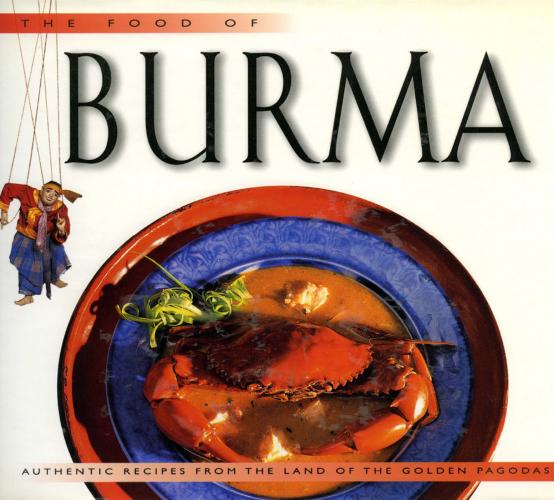Published by
Periplus Editions (HK) Ltd.
with editorial offices at
61 Tai Seng Avenue, #02-12
Singapore 53416 and
364 Innovation Drive,
North Clarendon, VT 05759 U.S.A.
Copyright © 1999
Periplus Editions (HK) Ltd.
All rights reserved. No part of this publication may be reproduced or utilised in any form or by any means without prior written permission from the publisher.
Printed in Singapore
ISBN: 978-1-4629-0974-2 (ebook)
Publisher: Eric Oey
Editors: Philip Tatham and
Melanie Raymond
Recipe testing: Noreen Rashid
Production: Violet Wong
Photo Credits
All food photography by Luca Invernizzi Tettoni. Additional photos courtesy Photobank Singapore: Luca Invernizzi Tettoni (pages 2, 4, 9-12,14-16,18, 20-21, 24-30) and Jean-Leo Dugast (pages 6-8, 13, 23).
Distributors
Asia Pacific
Berkeley Books Pte. Ltd
61 Tai Seng Avenue, #02-12
Singapore 534167
Tel: (65) 280-1330
Fax: (65) 280-6290
Indonesia
PT Wira Mandala Pustaka,
(Java Books - Indonesia)
Jl. Rawa Gelam IV No. 9
Kawasan Industri Pulogadung
Jakarta 13930, Indonesia
Tel. 62 (21) 4382 1088
Tel. 62 (21) 461 0206
Japan
Tuttle Publishing
Yaekari Building 3rd Floor, 5-4-12
Osaki Shinagawa-ku,
Tokyo 141-0032
Tel: (81-3) 5437-0171
Fax: (81-3) 5437-0755
North America, Latin America and Europe
Tuttle Publishing
Distribution Center
Airport Industrial Park
364 Innovation Drive
North Clarendon, VT 05759-9436
Tel: (802) 773-8930, (800) 526-2778
THE FOOD OF
BURMA
Authentic Recipes from the Land of the Golden Pagodas
Recipes by Claudia Saw twin Robert
Introductory articles by Wendy Hutton,
San twin and Win Pe
Photography by Luca Invernizzi Tettoni
The magnificent ruins of Bagan (Pagan) date back to the 11th and 12th centuries.
Contents
PART ONE: FOOD IN MYANMAR
Introduction 5
From the Delta, Plains and Mountains 7
A Complex Culinary Mosaic 15
Festive Rice 19
Traditional Meals 22
PART TWO: COOKING IN MYANMAR
The Burmese Kitchen 27
Cooking Methods 29
Burmese Ingredients 31
PART THREE: THE RECIPES
Basic Recipes 37
Appetisers 40
Rice 46
Soups & Noodles 50
Salads 68
Fish & Shellfish 82
Meat & Poultry 90
Vegetables 100
Desserts 110
Index 120
Dining by the timeless Ayeyarwady (Irrawaddy) River, Myanmar's main waterway which was referred to by Kipling as the "road to Mandalay".
Part One: Food in Myanmar
The undiscovered treasures of the Land of Gold are its culinary gemstones.
By Wendy Hutton
The food of Burma, "The Land of Gold" of ancient Indian and Chinese manuscripts, is one of the least known Asian cuisines. This is more a result of the country's period of self-imposed isolation than the intrinsic quality of the food itself. However, as Burma—or Myanmar as it is now officially called—opens its doors to visitors and international business, more people are discovering its intriguingly different cuisine.
Sitting between India and China, two powerful nations with strong cultural traditions, and sharing borders with Bangladesh, Laos and Thailand, Burma's beginning dates back some 2,500 years, when Tibeto-Burman-speaking people moved from Tibet and Yunnan into the northern part of the country. Kingdoms rose and fell over the centuries, many different tribes arrived and established themselves, and various Western powers set up coastal trading posts.
The British gained control over the country little by little, annexing it to British India, until the last king was dethroned in 1886. Burma regained its independence in 1946, becoming a socialist republic in 1974. In 1979, the ruling authorities changed the name to Myanmar.
Once known for its vast wealth in teak, rubies, jade and rice, Myanmar has in recent times set about developing into a modern nation. Yet it is the glittering golden stupas, the stone remains of ancient kingdoms, the timeless movement of wooden boats along the giant Ayeyarwady (Irrawaddy) River, the bustle and colour of local markets and the charm and gracious generosity of its people which remain in the visitor's mind long after departing.
Owing to the prevalence of Chinese, Indian, Thai and Western restaurants in tourist hotels, some visitors leave Myanmar without experiencing the local cuisine. Full of flavour, healthful, sometimes hauntingly similar to neighbouring cuisines, at other times dramatically different, the food of Myanmar is not complex to prepare at home.
Based on rice with a range of tasty side dishes, salads, soups and condiments, Myanmar cuisine offers a wide choice of flavours. Although the vast majority of the population is Buddhist, they make a distinction between taking life and buying food which has already been caught or killed. In general, Myanmar's Muslims slaughter the cattle and catch fish, while
